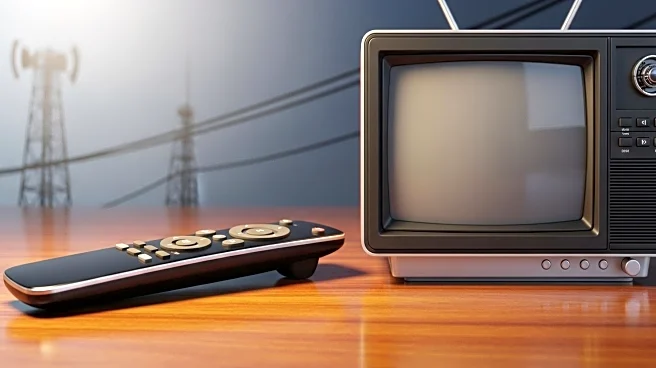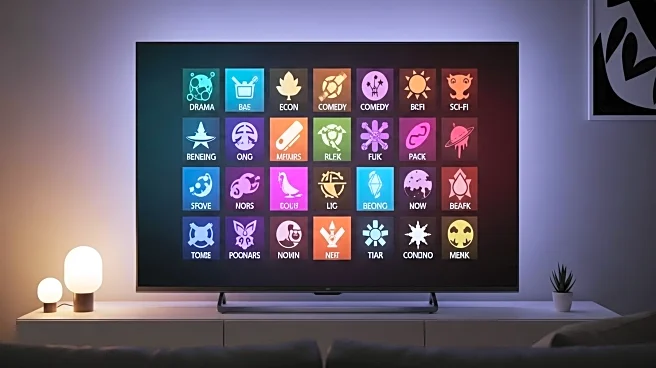What's Happening?
Nielsen's Media Distributor Gauge for August 2025 indicates a decline in streaming viewership, marking the first decrease after six months of growth. Streaming accounted for 46.4% of TV usage, down 0.9% from July, partly due to the absence of live sports like college football. In contrast, broadcast and cable segments showed gains, with broadcast rising by 0.7% to 19.1% and cable increasing by 0.3% to 22.5%. The gap between streaming and linear viewing narrowed from 6.7% in July to 4.8% in August. YouTube remained the top streaming service, while Netflix and Disney's platforms saw slight declines.
Why It's Important?
The shift in viewing habits highlights the evolving dynamics of the TV industry, with implications for advertisers, content creators, and media companies. The decline in streaming suggests vulnerabilities in the format, particularly its reliance on non-live content. The resurgence of broadcast and cable indicates a potential shift in consumer preferences, affecting advertising strategies and content distribution. Media companies may need to adapt to changing viewer demands, balancing streaming offerings with traditional broadcast content to maintain audience engagement.
What's Next?
Media companies may explore strategies to enhance streaming offerings, including incorporating live sports and events to attract viewers. The narrowing gap between streaming and linear viewing could influence future content and advertising decisions, with potential shifts in investment priorities. Stakeholders, including advertisers and content creators, may respond to these trends, shaping the future of TV consumption and media strategies.
Beyond the Headlines
The changes in viewing habits reflect broader cultural shifts in media consumption, with potential implications for content diversity and accessibility. The balance between streaming and traditional media may affect how audiences engage with content, influencing societal narratives and cultural trends.












